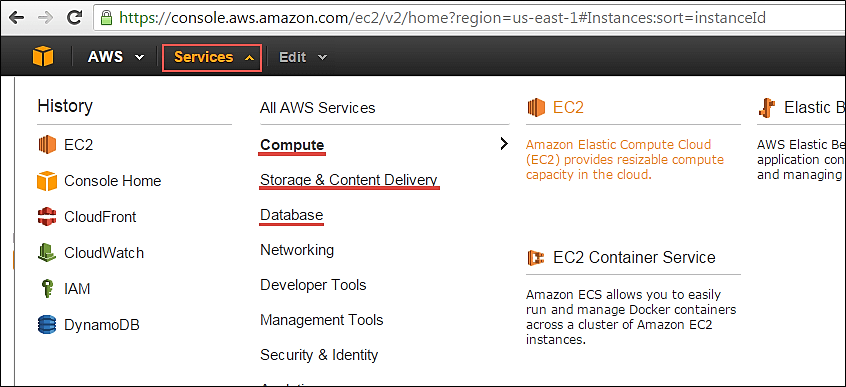How to assign multiple IP addresses to one network interface on CentOS
The practice of configuring multiple IP addresses on a particular network interface is called IP aliasing. IP aliasing is useful when you set up multiple sites on virtual web hosting on a single interface, or maintain multiple connections to a network each of which serves a different purpose. You can assign multiple IP addresses to one network interface from a single subnet or completely different ones.
All existing Linux distributions including CentOS supports IP aliasing. Here is how to bind multiple IP addresses to a single network interface on CentOS.
If you would like to set up IP aliasing on the fly, there are two ways to do it. One way is to useifconfig, and the other method is to use ip command. Using these two methods, let me show you how to add two extra IP addresses to eth0.
To use the first method:
$ sudo ifconfig eth0:1 192.168.10.10 netmask 255.255.255.0 up
$ sudo ifconfig eth0:2 192.168.10.15 netmask 255.255.255.0 up
$ sudo ifconfig eth0:2 192.168.10.15 netmask 255.255.255.0 up
To use the second method:
$ sudo ip addr add 192.168.10.10/24 dev eth0
$ sudo ip addr add 192.168.10.15/24 dev eth0
$ sudo ip addr add 192.168.10.15/24 dev eth0
To view a list of all IP addresses assigned to eth0 by using either method, run the following command.
$ sudo ip addr list dev eth0
2: eth0:mtu 1500 qdisc pfifo_fast state UNKNOWN qlen 1000 link/ether 00:0c:29:5c:86:f4 brd ff:ff:ff:ff:ff:ff inet 192.168.91.128/24 brd 192.168.91.255 scope global eth0 inet 192.168.91.10/24 scope global secondary eth0 inet 192.168.91.20/24 scope global secondary eth0 inet6 fe80::20c:29ff:fe5c:86f4/64 scope link valid_lft forever preferred_lft forever
If you used ifconfig to create IP aliases, you can also use the same command to view them.
$ ifconfig -a
eth0 Link encap:Ethernet HWaddr 00:0C:29:5C:86:F4
inet addr:192.168.91.128 Bcast:192.168.91.255 Mask:255.255.255.0
inet6 addr: fe80::20c:29ff:fe5c:86f4/64 Scope:Link
UP BROADCAST RUNNING MULTICAST MTU:1500 Metric:1
RX packets:22 errors:0 dropped:0 overruns:0 frame:0
TX packets:102 errors:0 dropped:0 overruns:0 carrier:0
collisions:0 txqueuelen:1000
RX bytes:3869 (3.7 KiB) TX bytes:18172 (17.7 KiB)
Interrupt:19 Base address:0x2000
eth0:1 Link encap:Ethernet HWaddr 00:0C:29:5C:86:F4
inet addr:192.168.91.10 Bcast:192.168.91.255 Mask:255.255.255.0
UP BROADCAST RUNNING MULTICAST MTU:1500 Metric:1
Interrupt:19 Base address:0x2000
eth0:2 Link encap:Ethernet HWaddr 00:0C:29:5C:86:F4
inet addr:192.168.91.20 Bcast:192.168.91.255 Mask:255.255.255.0
UP BROADCAST RUNNING MULTICAST MTU:1500 Metric:1
Interrupt:19 Base address:0x2000
lo Link encap:Local Loopback
inet addr:127.0.0.1 Mask:255.0.0.0
inet6 addr: ::1/128 Scope:Host
UP LOOPBACK RUNNING MTU:16436 Metric:1
RX packets:8 errors:0 dropped:0 overruns:0 frame:0
TX packets:8 errors:0 dropped:0 overruns:0 carrier:0
collisions:0 txqueuelen:0
RX bytes:480 (480.0 b) TX bytes:480 (480.0 b)
If you would like to permanently assign multiple IP addresses to an interface, create corresponding configuration files in /etc/sysconfig/network-scripts.
$ sudo vi /etc/sysconfig/network-scripts/ifcfg-eth0:1
DEVICE=eth0:1 BOOTPROTO=static IPADDR=192.168.0.5 NETMASK=255.255.255.0 ONBOOT=yes
Once you have created as many configuration files as IP addresses to assign, restart network to activate IP aliasing.
$ sudo /etc/init.d/network restart


No comments:
Post a Comment